Waste Recycling in Rubbish Clearances: Transforming Waste Management
Introduction to Waste Recycling in Rubbish Clearances
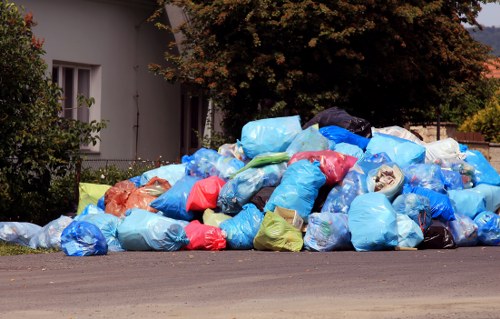
Waste recycling has become a cornerstone in modern waste management strategies, particularly in the context of rubbish clearances. As cities grow and waste production increases, recycling plays a pivotal role in reducing environmental footprints and promoting sustainability. Effective rubbish clearance systems, intertwined with recycling initiatives, ensure that we not only dispose of waste responsibly but also reclaim valuable resources that can be repurposed for new products. In today’s eco-conscious landscape, an integrated approach that incorporates recycling during rubbish clearances stands as a model for future waste management practices.
The concept of rubbish clearances is evolving. It is no longer solely about removing waste from our surroundings; it is about adopting a holistic approach that includes sorting, recycling, and repurposing materials. Municipalities, private enterprises, and community organizations are actively engaging in practices that not only curb pollution but also foster economic opportunities. The emerging trend indicates that when waste recycling is strategically integrated in rubbish clearances, communities witness both environmental benefits and improved resource efficiency.
The integration of recycling in rubbish clearances is underpinned by advanced technology and strategic planning. Through a combination of automated sorting systems, specialized waste collection vehicles, and state-of-the-art recycling facilities, waste materials are efficiently separated and processed. This systematic approach is essential in reducing landfill use, conserving natural resources, and even lowering greenhouse gas emissions, ultimately building a more sustainable future. Adopting this strategy not only makes environmental sense but also aligns with long-term economic and community health goals.
Benefits and Environmental Impact of Integrated Recycling
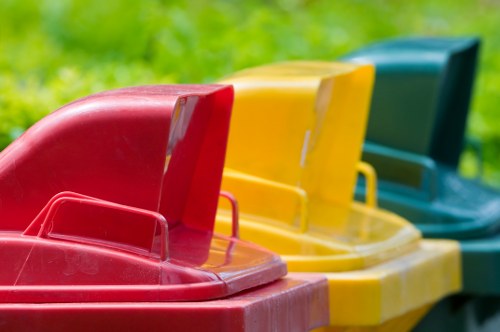
The benefits of incorporating waste recycling into rubbish clearances are far-reaching. For instance, material recovery from waste enables energy conservation, reduces pollution levels, and supports resource conservation. The transformative power of recycling is evident when we consider that one ton of recycled material can significantly diminish the impact on landfill sites. Environmental safety is one of the primary outcomes, as responsible recycling practices reduce the risk of hazardous substances leaching into soil and water. In this way, recycling in rubbish clearances is not only modernizing waste management but also actively contributing to the protection of our natural ecosystems.
Moreover, the economic advantages cannot be underestimated. Recycling processes create job opportunities in collection, sorting, processing, and marketing recycled materials. These sectors have grown robustly over recent years, with a surge in demand for environmentally responsible practices in both public and private sectors. Through recycling, companies reduce disposal costs and can even generate revenue by selling reclaimed materials. As societies pivot towards sustainability, the investment in integrated rubbish clearances that emphasize recycling is proving to be a financially sound long-term strategy.
Additionally, the broader community experiences numerous indirect benefits. Cleaner urban spaces, reduced traffic congestion caused by waste transportation, and heightened public awareness about environmental stewardship are just a few of these advantages. With city planners and governmental agencies increasingly prioritizing sustainable development, waste recycling is taking center stage. Organizations are now able to illustrate the positive outcomes of their efforts using metrics such as landfill diversion rates and reductions in carbon footprints. Ultimately, these measures bolster community pride and resilience through improved living conditions and economic prosperity.
The Recycling Process: From Collection to Reprocessing
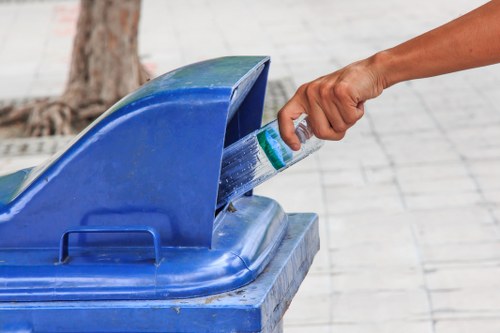
A successful integrated waste recycling system in rubbish clearances comprises several well-coordinated stages. It begins with the collection of waste, where citizens and businesses place their rubbish in designated containers. Specialized vehicles then transport this waste to processing facilities where it undergoes segregation. The primary goal is to separate recyclables such as plastic, glass, metal, and paper from non-recyclable waste through automated sorting systems and manual inspection processes. This step is critical, as the purity of materials affects the feasibility of subsequent recycling procedures.
Once the waste is collected and sorted, the next step involves the reprocessing of the materials. Advanced machinery is employed to clean, melt, repurpose, or otherwise convert the sorted items into raw materials for new manufacturing processes. Often, an ordered list of steps is followed:
- Initial sorting and separation of waste.
- Cleaning and decontamination.
- Processing and transformation into reusable materials.
- Quality check and packaging for market distribution.
Throughout this process, innovation and technology drive efficiency and effectiveness. Recycling facilities invest in research and development to improve the recovery rates of various materials. As a result, many modern recycling plants are capable of processing a broad spectrum of waste types, ultimately reducing the volume that ends up in landfills. The collaboration between technology companies and waste management professionals is fostering new innovations that make the entire recycling process more streamlined and environmentally friendly.
Community Impact and Future Outlook for Recycling Initiatives
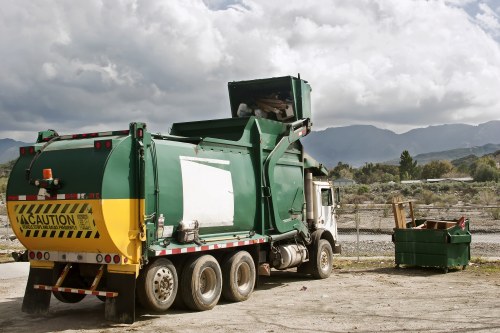
Communities that adopt integrated waste recycling in their rubbish clearance operations witness transformative changes. Social innovations emerge, influenced by heightened environmental consciousness and community participation in local recycling programs. Neighborhoods thrive on the collective effort to keep streets clean, reduce waste volumes, and reclaim reusable materials. Furthermore, public education initiatives focus on teaching citizens about the importance of recycling, the benefits it brings, and the practical steps they can take to contribute. This increased public engagement fosters a sense of shared responsibility and environmental stewardship.
On a broader scale, government bodies and environmental agencies are increasingly supportive of initiatives that promote recycling in rubbish clearances. Policy frameworks are being developed to incentivize sustainable practices, including grants, tax rebates, and financial support for recycling enterprises. Local councils are partnering with private sectors to optimize waste collection and recycling services. As these programs gain momentum, technological advancements are also playing a vital role. The integration of smart sensors in bins, automated sorting lines, and real-time monitoring systems illustrate how technology and policy are converging to create robust waste management systems.
Looking ahead, the future of waste recycling in rubbish clearances appears promising. Experts suggest that technological advancements combined with innovative policies will lead to a dramatic shift in how urban waste is managed. Investments in renewable energy and automation within recycling plants hint at a significant reduction in carbon emissions and reliance on traditional landfill sites. Key sectors, from manufacturing to construction, are expected to benefit from the steady supply of recycled materials, thereby promoting a circular economy. The trend towards sustainability is undeniable, and as communities recognize these benefits, more environmentally responsible practices will become standard. Join the movement and contribute to building a sustainable future by supporting efficient recycling practices in your locality.
Closing Thoughts and Call to Action for a Greener Tomorrow
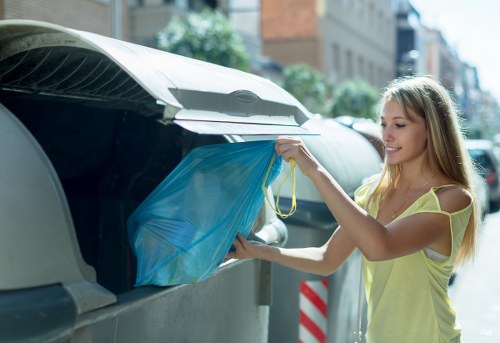
The journey towards environmentally friendly waste management systems is a collaborative effort. With waste recycling integrated into rubbish clearances, we are not only addressing the immediate challenges of waste disposal but also paving the way for a sustainable future. Every item recycled signifies a conserved resource and a step away from environmental degradation. This transformative approach is essential in mitigating climate change, reducing pollution, and ensuring that natural resources remain available for future generations.
In today’s fast-paced world, where waste production is at an all-time high, making informed decisions about rubbish clearance methods is crucial. By embracing recycling, communities and organizations show leadership in environmental conservation and set important examples for others to follow. The positive impacts of these methods are far-reaching, touching on economic growth, technological innovation, and improved community health. From local councils to individual households, every effort counts. In essence, your choices in waste management have a global impact. It is time to act!
We encourage everyone to engage and take proactive steps towards implementing effective recycling-driven rubbish clearances. Whether you are a community leader, a business owner, or a conscientious citizen, the role you play in waste management is invaluable. Contact us today to learn more about how you can contribute to this revolution in waste recycling, or book your service now and become a part of the solution. Let’s work together to create a future where waste is not wasted, but transformed into opportunities for growth, sustainability, and environmental resilience.
Additional Insights and Future Strategies
Future strategies in waste recycling and rubbish clearances will likely include further integration of smart technologies and AI-driven sorting systems. By embracing the latest technological innovations, waste management companies can ensure higher recycling rates and more effective rubbish clearance processes. These advancements offer a detailed overview of potential improvements, ensuring that operational efficiencies are maximized.
Key Strategies for Progressive Recycling:
- Investment in Technology: Continuous research and development in automated sorting and processing.
- Community Engagement: Educating the public about recycling benefits and maintaining active participation.
- Policy Incentives: Government subsidies and tax benefits for sustainable waste management practices.
- Partnerships between private and public sectors to innovate and transform waste management systems.
By fostering these key strategies, it is anticipated that the next decade will see a significant advancement in how waste is managed, recycled, and repurposed. The integration of data analytics and real-time monitoring systems with existing waste collection infrastructures serves as a beacon for future innovations in environmentally conscious waste management practices. Overall, the continuous evolution of these strategies demonstrates a clear commitment to sustainability and a greener tomorrow.